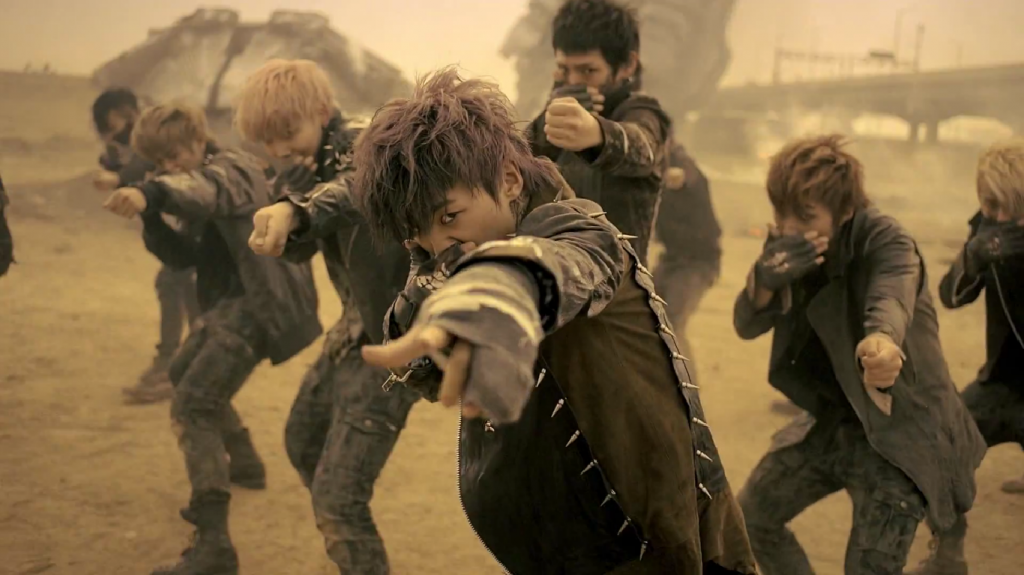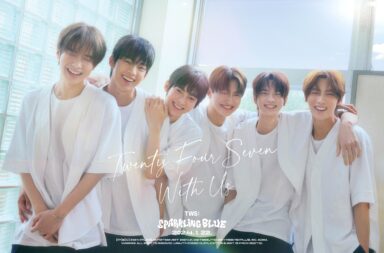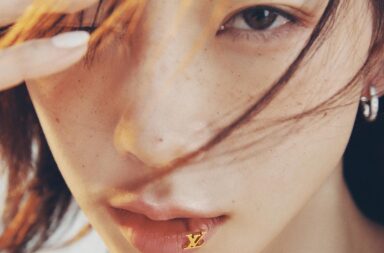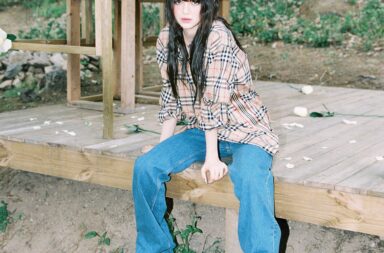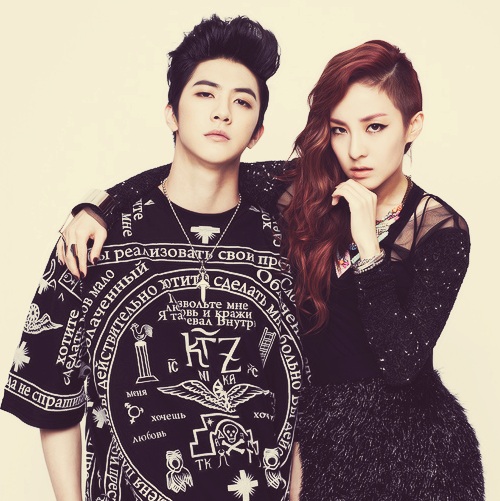 It’s no secret that the Korean pop music industry is formulaic. It is a well known fact the training programs have been well established at agencies for years with the intention of not encouraging talent but rather cultivating it, almost like a farmer breeds and raises livestock. Young children and teenagers are often groomed and conditioned from a young age to live up to the label of ‘idol’ and will most likely live with the idol label for the greater part of their prime. Many of us here at Seoulbeats, myself included, therefore often refer to the K-pop music industry as the ‘K-pop machine,’ to better convey the clear cut mechanisms or cogs that keep the industry alive as well as the cookie-cutter products that come out of it.
It’s no secret that the Korean pop music industry is formulaic. It is a well known fact the training programs have been well established at agencies for years with the intention of not encouraging talent but rather cultivating it, almost like a farmer breeds and raises livestock. Young children and teenagers are often groomed and conditioned from a young age to live up to the label of ‘idol’ and will most likely live with the idol label for the greater part of their prime. Many of us here at Seoulbeats, myself included, therefore often refer to the K-pop music industry as the ‘K-pop machine,’ to better convey the clear cut mechanisms or cogs that keep the industry alive as well as the cookie-cutter products that come out of it.
Like any analogy, though, not every nuance of all idol groups can be explained by the machine, but for the most part in K-pop things like member composition, concept, music, and even a group’s longevity can be computed by understanding the K-pop formula and the nature of mainstream trends. Today, I’d like to talk about one prevalent idea, a big picture question that quite literally steers success for the groups we know and love: cute or sexy?
Concepts are a big deal in K-pop–to have music, you must first have a concept, and companies will often even say it themselves, usually something along the lines of “So-and-so will be transforming from their usual cute image to a more mature and sexy one for this nth comeback blah blah” or vice versa. And at first, its like, okay, awesome, so and so will finally be doing something different. But are they really?
I say ‘cute or sexy’ because quite frankly, after being a fan of K-pop for several years, you rarely see anything that is neither cute nor sexy. And that makes sense–it’s easy to market sex and cute appeals because the majority of your audience will not only understand it but respond to it too. Sex is easy to understand–it’s basic biology. Aegyo (a notion often associate with the cute concept) is a cultural practice, so obviously native Koreans get it, but so do seasoned fans like myself; in short we also respond to the cute.
The cute concept usually can be defined by the inclusion of aegyo, bright colors, child-like noises or intimations (no matter the age), lots of legs and virtually no cleavage (i.e. a covert sex appeal), but is not limited to these characteristics. It is usually used to portray innocence or an innocent romance. For many new international fans however, the prevalent cute concept in Asian music is quite dumb-founding, and to some even repulsive. On the other hand, for people who understand K-pop for its cultural context, the cute is both endearing and lucrative.
So what is cute in K-pop?
[youtube http://www.youtube.com/watch?v=U7mPqycQ0tQ&w=560&h=315](“Gee,” in my opinion, is still one of the best K-pop MV’s I’ve ever seen.)
[youtube http://www.youtube.com/watch?v=839DdUWbeLw&w=560&h=315](oh god my rookie feels right now)
[youtube http://www.youtube.com/watch?v=4oUtxee1QM8&w=560&h=315](my teeth are rotting)
[youtube http://www.youtube.com/watch?v=Cehi-lCqSX0&w=560&h=315](let’s not forget that this actually happened)
On the converse, now we must ask: what is sexy? Usually after a group does cute, they do sexy to changes things up conceptually, to prove their ability in a range of appeals previously unseen. The sexy concept in K-pop is usually explicitly characterized by deeper pitches, darker colors, provocative choreography, and, of course, overt sexual appeal. Sex is easy to understand and the tension is easy to feel, which makes it a universal seller. There is little cultural confusion when it comes to embracing this concept, as the sexy look is marketed in entertainment industries worldwide. The only difference I would say is, again, how culture intercepts the extent to which the sexy concept is taken.
In K-pop, however, sexy is our short respite from the cute, a chance to get know the more mature sides of favorite oppas and unnies before they return to their other side of the concept spectrum. So what does sexy K-pop look like, you ask?
[youtube http://www.youtube.com/watch?v=q_gfD3nvh-8&w=560&h=315](Yuri is too hot for her own good somtimes)
[youtube http://www.youtube.com/watch?v=Z37WOB7cf44&w=560&h=315](CNU stop being so hng)
[youtube http://www.youtube.com/watch?v=QnAhnxmSNFw&w=560&h=315](yeah not a Rainbow fan tbh)
[youtube http://www.youtube.com/watch?v=gWIkiI_UmeE&w=560&h=315](Blonde Sungmin. That is all)
I point these two concrete concepts out for a few important reasons. I know you know that cute and sexy are staple K-pop concepts–you don’t need this article to understand that much. Rather, the point I’m trying to make is that K-pop is either cute or sexy, and as a result, has little to offer for what’s conceptually in between (like drama/story, social message, abstract, sexy/cute fusion or alternative concepts).
[youtube http://www.youtube.com/watch?v=NGe0hHvAGkc&w=560&h=315] [youtube http://www.youtube.com/watch?v=LrenvX71Dzw&w=560&h=315] [youtube http://www.youtube.com/watch?v=WNnkbwFo9hU&w=560&h=315]Of course, that is not to say that other concepts have never surface, because they certainly have, but when you think of K-pop as a genre, you usually only differentiate between the two big picture concepts. And these two big picture concepts speak volumes about K-pop. This is of course why Korean alternative and indie music are often drowned out on the music scene and are forced into niche markets. It is also why mobility on the idoldom ladder is static: many veteran idol endeavors detriment rookie efforts to climb the idoldom ladder because more often than not, everyone is either trying to be cute or sexy.
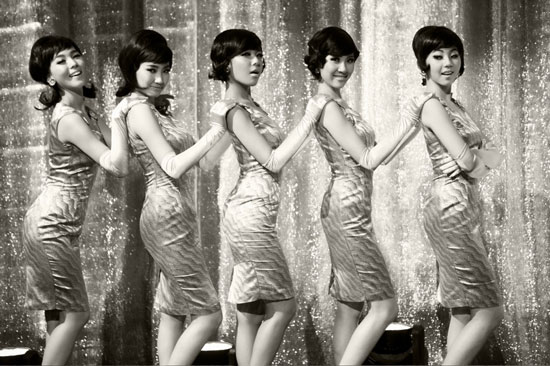 Now I say ‘pick your poison’ because to some degree both concepts are not only trite and overdone, but they are also futile. Like mentioned before, the availability of only two big picture concepts makes it difficult for the idol scene to be multi-faceted or equally competitive, like I mentioned above. The widespread use of these two concepts are also a hindrance to the Hallyu effort. For instance, no one girl group is going to attempt an international debut with a cute song dripping in aegyo because a lot of the cute appeal is primarily appealing only in the domain of Asia.
Now I say ‘pick your poison’ because to some degree both concepts are not only trite and overdone, but they are also futile. Like mentioned before, the availability of only two big picture concepts makes it difficult for the idol scene to be multi-faceted or equally competitive, like I mentioned above. The widespread use of these two concepts are also a hindrance to the Hallyu effort. For instance, no one girl group is going to attempt an international debut with a cute song dripping in aegyo because a lot of the cute appeal is primarily appealing only in the domain of Asia.
K-pop sexy, on the other hand, is only half of a westernized image of sexy, but a K-idol group can’t get too sexy unless they risk offending or abandoning audiences back at home. In these circumstances, a Hallyu effort calls for a concept that is neither cute or sexy, as K-pop defines it, but a concept that is a little more original. Easy examples of this are the Wonder Girls going retro and Psy doing his self-depracting thing. And originality, let’s be honest here, really isn’t all too prevalent in mainstream K-pop.
At the same time, K-pop industry is free to do what is wants and the Korean audience at large is free to demand what it wants, so I don’t mean to say that both the sexy and cute concepts are illegitimate because both you and I know that they are not. But if K-pop is going to have any growth in the near future or if new groups are going to have a fair chance at the spotlight, the concept needs to reinvent itself. In recent years, groups like Orange Caramel made use of cosplay and B.A.P. employed the hypermasculinity angle, which are signs of differentiation into new directions. But, for the most part, the mainstream still has a long way to go.
For now, it seems like the cute and the sexy are going to continue to rock our worlds for the next few years and maybe then some, but it’ll be just a few years more than that when we’re all going to get tired of the same old cycle. What K-pop will look like then and what kind of fans we will become is hard to say, but I have my hopes on change for the better. So until that day comes, we’ll just have to indulge our idols at what they do best, and wait out the storm of pelvic thrusting and endless winking for something more interesting.
(SM Entertainment, WM Entertainment, DSP Media)

